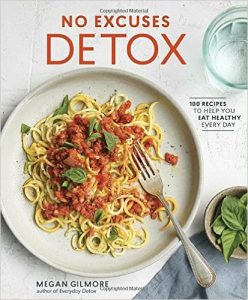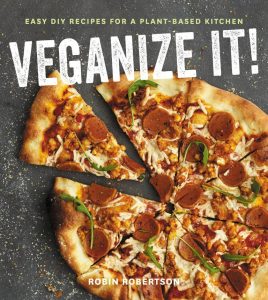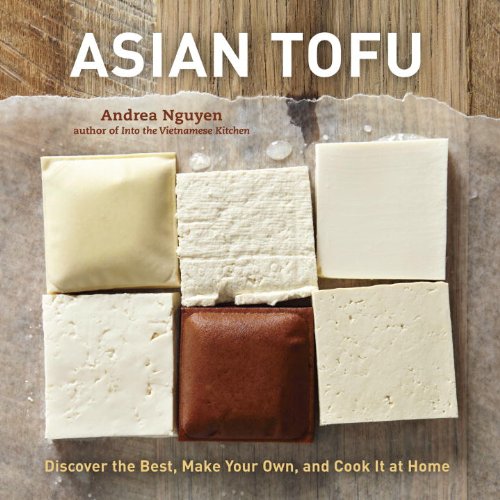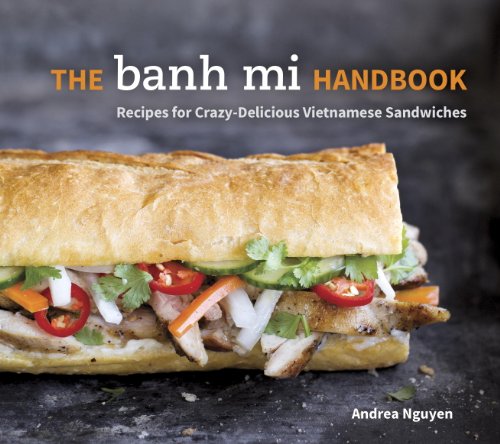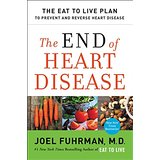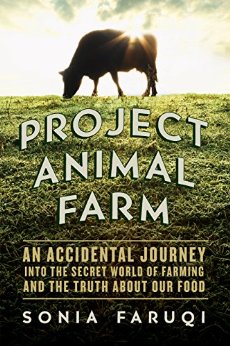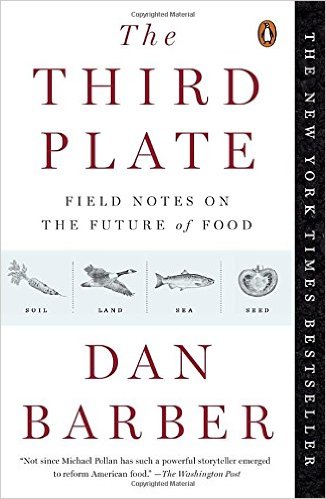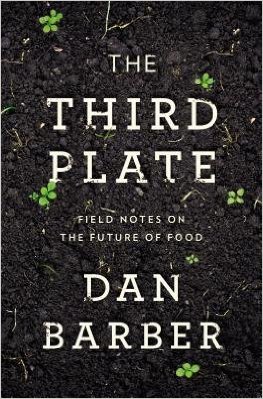Category Archives: Knowledge Is Power
No Excuses Detox – 100 Recipes to Help You Eat Healthy Everyday
by Megan Gilmore. Ten Speed Press 2017 $19.95 (Amazon $10.70, Spiral $22.50)
This beautiful book landed on my doorstep and I had to read it right away. Yes, I actually do read cookbooks (cover to cover); it’s a glitch in my system and my friends think it is hilarious. This is not a totally Plant-Based cookbook, but it is gluten-free with lots of vegan options – and many that are easily convertible. The goal here is “clean eating.” The author blogs at detoxinista.com which will give you some further ideas about her food and if it will work for you.
The design is attractive and enticing with front and back cover “fold-overs” so you have two easy bookmarks. The easy-to-use recipe layout has multiple circled annotations so you can choose vegan, dairy-free, gluten-free, egg-free, nut-free, soy-free, sugar-free and those with meat protein options are clearly noted as well. She also indicates: 30-min recipes, 15-min prep, kid-friendly, freezer friendly and slow/pressure cooker options (with specific instructions for the Instant Pot). The photos, not one for every recipe but a lot, are beautiful but sometimes don’t match the written descriptions exactly. And there are written descriptions – an interesting lead-in and often very useful notes at the bottom.
Ms. Gilmore is also a fan of food combining – that was big in the ‘70s and I can’t really tell if this is rejuvenation of that same perspective. But she suggests eating only certain foods together – and makes that easy if you follow her recipes and three week-long sets of menus that make sure that the recipes in those menus also follow that food-combining perspective. That concept requires more study on my part…..
I picked a couple recipes to try out. But first – some of the basics that I noted: Ms. Gilmore uses oil (sometimes a lot and sometimes a little) and she uses salt – sometimes with abandon. In many cases, those are easily modified – although she cautions about changing the ratios in baking when using coconut oil or trying to sub EVOO for coconut oil lest you create a major disaster. She also warns that mixing coconut oil and baking powder together creates a perfectly safe green (albeit surprising) product – with St. Patrick’s Day coming up I might just try that.
Skillet Breakfast Hash was my first try. Green cabbage, onions, and green peppers form the base. The recipe suggests topping it with eggs, sprinkling with goat cheddar (all ingredient cheeses in the book are from goat or sheep milk) and finishing in the oven. Since I actually had a couple of free-range, local organic eggs left by a guest, I put two on the hash. And instead of the two ounces of goat cheddar, I finally shredded 1 ounce of Daiya Mozzarella and sprinkled it on the top. The result was tasty although the Daiya was so finally shredded that its presence was unnoticeable. The eggs didn’t add that much so I think I might try this again with some tofu – or nothing.
The next recipes I’ll try are Baked Parsnip Chips, Butternut Mac ‘n Cheese (still looking for the one that really works), Deep Dish Chocolate Cookie and No Bake Brownie Bites.
This book contains some fresh ideas. New recipe concepts seem to be generated in the ether and then appear simultaneously in many books, blogs or sites. So when you read some new thoughts, that’s a good thing.
VEGANIZE IT! Easy DIY Recipes for a Plant-Based Kitchen
BY Robin Robertson – Houghton Mifflin Harcourt March 7, 2017. $25. Amazon $14.92/ Kindle $12.99
Another really good book from one of the top vegan cookbook authors. Robin Robertson’s books are classics and I have most of them. So I had high expectations for this one. It’s a beautifully designed book with a stiff fold-in cover for marking your place and lots of full-page photos and chapter intros that sometimes bleed across a double-page spread.
The chapters are similar to those of an omnivore cook book – with a twist. Plant-Based Meats, Vegan Charcuterie, Instead of Seafood, Dairy-Free and Egg-Free, Too…. all very enticing.
Since 2010, I’ve been turning to Steen & Newman’s “The Complete Guide to Vegan Food Substitutions: Veganize It! Foolproof Methods for Transforming Any Dish into A Delicious New Vegan Favorite.” And collecting recipes from chef-written cookbooks, blogs and the www. There have been so many advances in plant-based cooking in the past six years that I thought Roberstson might, essentially, be providing an updated, cutting edge version of “The Complete Guide…”. And in some ways she has. But I was hoping for some break-through ideas instead of riffs on existing chef or blogger-developed veggie cuisine. Or at least a compilation of those best of the best ideas. But I misunderstood the intention – which might have had something to do with the similarity of the titles…..
Instead, the book provides “clean” vegan recipes for lots of basics like sour cream cream cheese, cheesy sauces, ricotta, hollandaise, feta, butter!, gravy plus many, many more. Beyond basics are burgers, pulled pork, fish ‘n chips, sausages, meatballs, sea scallops, five bacon recipes, and more. Many of these products are available in the supermarket freezer or refrigerator case but made with a laundry list of additives and other unpronounceable ingredients. So this is why I add the word “clean.” Ms. Robertson first chapter includes home-made versions of pantry items (many of which are not vegan in their store-bought versions). Each chapter also includes more involved recipes that use a few of the basics made from the included recipes or, if time is short, from store-bought versions.
I started my review by preparing a couple of the recipes. First was Creamy Ranch Dressing that starts with 1 cup of mayo – it had good flavor but the mayonnaise was too prominent so I cut it with a little almond milk that also made it more pourable. The second one was Cheddary Sauce which is pictured below (these are my photos, not from the book). This was a tasty cream sauce and it worked well over a steamed veggie and quinoa bowl, but it didn’t taste anything like cheese, especially cheddar, which the name implied. I made it in a Vita Mix so just letting it blend a little longer heated it up – once the cashews had been soaked, it was quick and easy despite a lengthy list of ingredients. I will make it again – perhaps amping up the seasonings and playing with the liquor choices. Next up are the five bacon recipes and the pulled pork.
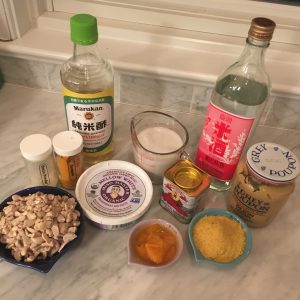
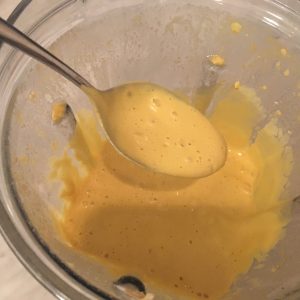
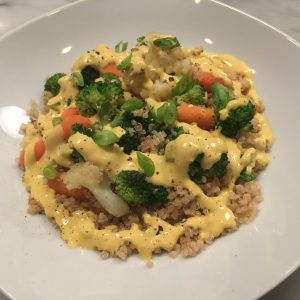
A couple nitpiks: Recipes labeled with cheesy names have to taste cheesy – nooch just doesn’t taste cheesy to me. And there isn’t any nutritional info – I’d like to know the calorie count and the percentage from fat – is it a 30-cal tablespoon or a 125 cal one? Also while the cashew craze has been well addressed, alternatives would be appreciated (since cashews are high-FODMAP) and a little more on aquafaba would also be helpful and suggestions for those among us who choose oil-free.
Bottom line – this book is a keeper. There are enough interesting concepts in here to encourage experimentation. It is not haute cuisine, but it is reliable, tasty, clean vegan. And that’s worth a lot.
Good Clean Food Shopping Smart to Avoid GMOs, rBGH and Products that may cause Cancer and other Diseases
By Samuel Epstein, MD and Beth Leibson – Skyhorse Publishing 2013. $24.95/ Amazon $16.99, $6.50 used
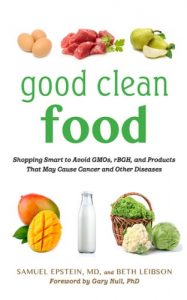
Dr. Epstein is a voice we should hear. His long and deep expertise on the avoidable causes of cancer has been shared in twenty books and 270 peer-reviewed articles. He is professor emeritus of environmental and occupational medicine at the University of Illinois School of Public Health and chair of the Cancer Prevention Coalition. He has also served as president of the Rachel Carson Council and other industry organizations. Co-author Beth Leibson knowledgeably unpacks this far-ranging erudition to make it accessible and understandable to the layperson.
This is a short read outlining important concepts that are clearly described – the main foci are:
Milk – the US permits the injection of the genetically-engineered growth hormone (rBGH – named by Monsanto Posilac) into dairy cows which causes elevated concentrations of IGF-1 (Insulin-like Growth Factor). The upside is that it increases milk production by 11-15%, the downside for the cow is that they get sick, for instance 25% get mastitis which adds more pus to the milk and which also requires antibiotics. About 20% of dairy farms in the US inject their herds with rBGH which creates IGF-1 but, since labeling is not required, consumers have no idea. The downside for the consumer, in addition to the antibiotic load, is that IGF-1, which is not destroyed by pasteurization, encourages cells to grow – in children it’s usually bones and organs, in adults it can be cancer cells. So, if you choose to continue to use dairy products, buy only organic from grass-fed herds. BTW: The EU and Canada outlawed rBCH and IGF-1 in the 90s. Better yet – plant milk.
Beef – Starting in the ‘50s, US cattle have been injected and/or fed a wide variety of sex hormones and other growth drugs. Today that cocktail, injected into 90% of all US cattle, contains natural estradiol, testosterone, and progesterone plus synthetic hormones zeranol, trenbolone, and melengesterol – all designed to add quick weight and roughly $80 additional profit per animal. The EU outlawed this practice in 1989. Industrial farmed meat cows are also fed prophylactic antibiotics which has contributed to the creation of superbugs that jump to humans and are resistant to most if not all antibiotics. Other beef topics include nitrates (and the link between hot dogs and pediatric brain cancer), radiation, the significant advantages of grass-fed beef and, again, the need for labeling.
Produce – The Dirty Dozen/Clean Fifteen – The Environmental Working Groups master list of the dozen most likely fruits and vegetables, when conventionally grown, to be drenched with pesticide – add kale and collards to the EWG list. The Clean Fifteen lists those least likely to be tainted. The authors also suggest buying “American” since imported produce usually contains higher percentages of pesticides. This chapter then details the negative effects of these insecticides and herbicides, many of which contain Organophosphates, which has been shown to block acetylcholinesterase that stops nerve cells from firing. The demonstrated effects include increased incidences of ADHD, autism, reduced memory and lowered IQ. The answer is organically grown produce.
Corn and Soybeans & GMOs – These are the two most prolific foods on the planet; corn, for instance, provides over 20% of all human nutrition – but both are largely used for animal feed. Both can be cultivated as vegetables or as oil or as…. The broad-spectrum herbicide Roundup, a ramped up version of Glyphosate (which is a type of organophosphate), was developed by Monsanto to increase field yields. Monsanto also developed many Roundup-ready, patented crop seeds that can tolerate the pesticide. Initially Roundup works, but then, over time, the weeds become resistance and the farmers find it necessary to increase the quantity of Roundup creating more dangerous conditions for farmers and consumers. Glyphosate-resistant alternatives exist but share the same problems – they kill off amphibians as well as pests and weeds and they contain an inert ingredient (a surfactant) to help the chemicals penetrate the plants which has shown to be harmful to humans. A newcomer is Bt corn (Bacillus thuringiensis), a plant that exudes its own pesticide which is also dangerous to other living things, like butterflies and humans. The chapter concludes with a review of the politics as well as alternatives – especially non-GMO organic.
Chicken & Eggs – Conventionally raised chickens (and eggs) are fed a wide range of ingredients to encourage speedy growth including prophylactic antibiotics – which pass to humans creating similar problems to those of beef. At first brush, the answer seems to be organic. In order to be labeled organic, broilers and egg-laying hens alike, must be fed organic feed without antibiotics (except for illness), hormones or pesticides and they must have access to the outdoors. An organic egg comes from an organic laying hen. But beware the various levels of “organic” – large-scale industrial and some family-size organic egg farms may offer an open door with an impenetrable maze to access it so there is no “scratching in the dirt.” The key descriptor seems to be “pasture-based” or “free-range” organic where mobile housing moves frequently to fresh fields and the birds are outdoors as often as inside. All of this applies to “broilers” as well.
Avoiding GMOs – This gets harder every day; again look for the word “organic” otherwise almost any, for instance, soybean or soybean derivative will likely be from GMO plants– but at least know the legal definitions: “100% organic” means just that. “Organic” means 95% of ingredients are. “Made form Organic Ingredients” 70-94% is organic. The word “organic” on the ingredient panel only means that less than 70% is organic. An on fruits and vegetables – look for a label with a 5-digit number beginning with 9 – that’s organic. Beginning with an 8 means GMO (but that’s rarely labeled). Four digits beginning with 3 or 4 means conventional.
The remainder of the book discusses detoxification and future trends like Budget organics – private labels, Farmers’ markets, CSAs Buying clubs, Food Co-ops. And trends among various ethnic groups and around the world – all of which are well worth reading. Finally check out the organic industry watch dog: Cornucopia Institute www.cornucopia.org.
Asian Tofu
by Andre Nguyen. Ten Speed Press 2012, Large format, hard cover $30 ($23.56 or $12.99 Kindle)
The only book that I owned on making tofu was the “Book of Tofu” by William Shurtleff and Akiko Aoyagi circa 1979. It’s a very yellowed, dense paperback ($2.95 then*) filled with tons of information. But somehow it always intimidated so when I picked up Nguyen’s “Asian Tofu” with lots of big, beautiful photos, graphics and white space (albeit at ten times the price ), I was encouraged to try this again.
Not surprisingly the basic recipe that Nguyen uses is almost the same as Shurtleff’s – she just makes it sound easier. It’s soybeans, water and coagulant with a proper mold and accoutrements – that’s pretty much it. Nguyen begins with a highly detailed Homemade Tofu Tutorial: an immersion in the various types starting with soy milk, then on to silken tofu, tofu pudding, block tofu, seasoned pressed tofu, tea-smoked pressed tofu, white fermented tofu, fresh tofu skin and soy-simmered fried tofu. The rest of the book is devoted to how to use each kind of tofu once you successfully mastered it. Again, the photos are the name of the game here. Seeing the process and knowing what you’re going for makes all the difference. She has encouraged me to try this to see if the result is as good as or even better than the lovely artisanal product produced by The Bridge Company in Middletown, CT. (I was privileged to spend several hours there watching the process – seeing how very minimally processed this product can be.)
Nguyen continues to teach the reader/cook through chapters on Snacks and starters, Main Dishes, Salads, Mock Meats, Buns, Dumplings, Crepes, and Sweets. . She ends with a chapter on Basics that covers stocks, and sauces. Be aware this is not a totally plant-based book. There are many recipes using seafood and meat. But, as in her earlier book, plant-based substitutions are relatively easy and it is a host of basic concepts that she is teaching.
*BTW: The original “Book of Tofu” is still available for $7.23 on Amazon (used $0.1 and up) and a new edition, “Book of Tofu – Protein Source of the Future… Now!,” a larger paperback with photos, updated information and newly designed covers, was published in 2012 ($17.95, available from $8 up). That might be well worth purchasing. Together these two books will tell you all you want, need or wish to know about tofu.
The Banh Mi Handbook – Recipes for Crazy-Delicious Vietnamese Sandwiches
by Andrea Nguyen. Ten Speed Press 2014. $16.99 (Amazon $11.43, or $4.99 Kindle)
Banh Mi sandwiches have been the subject of so many articles and restaurant reviews that they have certainly captured my imagination and my salivary glands. But they are so meat-centric that I just couldn’t figure out how to replicate this described deliciousness within the confines of even a flexible plant-based diet. Nguyen’s small, hard-cover book helped me figure that out. This is by no means a vegetable-forward book; the bulk of the recipe chapters cover all of the main meat, poultry and seafood categories. But, there is a chapter on vegetarian fillings, two on breads and other “holders,” and, probably most important, one on mayonnaise, sauces and pickles which form the flavor profile that makes Banh Mi sandwiches so addictive. So you might find it worth the investment in a Kindle version for the Baked Maggi Tofu, Edamame Pate or the four other vegan fillings or for the flavorings of her meat pates that could be reinterpreted in a mushroom or bean pate.
The End of Heart Disease
by Joel Fuhrman, MD, Harper One, 2016
According to Dr. Furhman, his Nutritarian Diet will make it impossible to have a heart attack, while it reverses obstructive coronary artery disease (CAD) and radically lowers your cholesterol and blood pressure, reduces your weight, restores normal bowel function, improves your immune function and maintains youthful vigor in the face of aging. Fuhrman’s Nutritarian diet can be totally plant-based or it can be flexitarian which includes some animal products albeit in very small quantities (three small servings a week). But in either case, it is predominantly vegetables, beans seeds and nuts. The goal is a diet that is nutrient dense, hormonally favorable (avoiding, especially, excess insulin and insulin growth factor [IGF-1]), nutritionally adequate (including all essential nutrients), and avoids toxins. The basis for the diet’s choices are ANDI scores (Aggregate Nutrient Density Index) that ranks foods based on the nutrients delivered for each calorie consumed.
FOOD CHAINS – The Revolution in America’s Fields
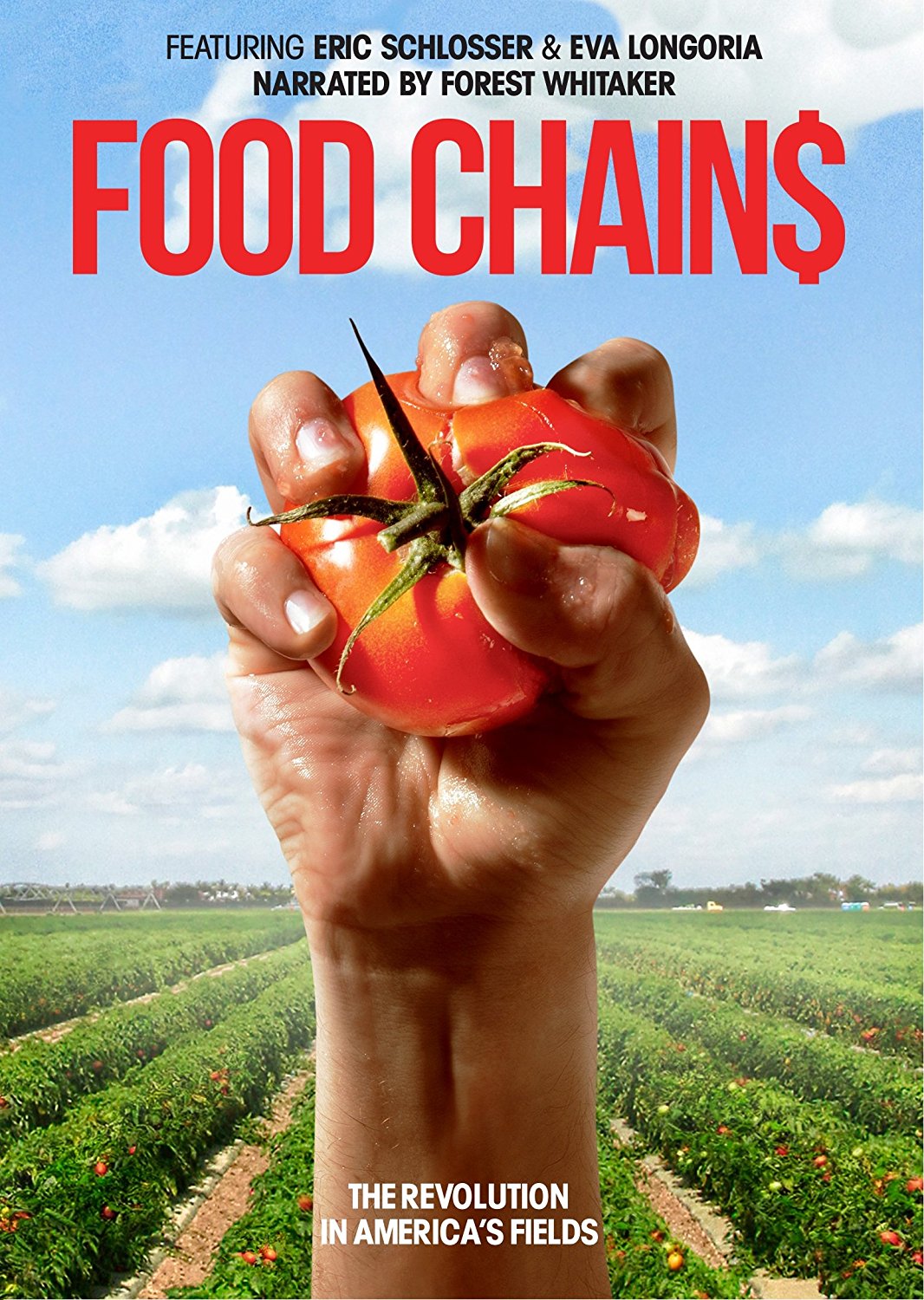
Director: Sanjay Rawal
Executive Producers: Eric Schlosser and Eva Longoria
Featuring: Eric Schlosser, Eve Ensler, Barry Estabrook, Dolores Huerta, Robert Kennedy Jr., Kerry Kennedy, Eva Longoria, Alma Martinez. Narrated by Forrest Whittaker.
Studio: Illumine Opportunity Group and Two Moons
Running Time: 1 hr. 22 min.
Released: 2014
Developed by Eva Longoria and Eric Schlosser (producer of Food Inc. and Fast Food Nation), this fair, accurate and exceedingly well-done documentary follows a group of migrant farmworkers who pick tomatoes (for Publix and Walmart) in the fields around Immokalee, Florida.
A small group of tomato workers have formed the CIW (Coalition of Immokalee Workers) to try to improve the deplorable conditions under which farmworkers live and work – and their target is Publix, the largest purchaser of tomatoes in Florida – a super chain worth $30 billion. If they just add a single cent to the wholesale cost of a pound of tomatoes it could double the workers’ pay. But Publix refuses to meet. There is a hunger strike – workers wielding signs line the roadways – but after six days that hasn’t gotten them any closer to a meeting.
The small farmer is caught in the middle; it’s a high stakes game every year. The answer seems to lie with the people at the top – the enormous buying power of the supermarkets. Similar problems exist in Florida’s pepper and cucumber industries. And in California as well. Which produces more fresh food than any other state and so has more migrant workers.
The problems started when Walmart got into the grocery business in the 1970s and everything changed. In order to compete the smaller chains had to consolidate into behemoth supermarket chains creating a Monopsony (a market situation in which there is only one buyer). Price reductions trickled down. The average daily pay for tomato pickers is $42 from 5am-8pm (about a penny per pound – paying another penny would double farmworkers wages). Some weeks, it’s $300-400 other weeks $100. The’r wages total about $10 -13,000 a year.
Sexual harassment of women farmworkers by their field managers is at 80%. The women are afraid to report the incidences for fear of losing their jobs. These are sweatshops in the fields. Actual, literal slave rings were also uncovered. After many protests, the CIW finally got Taco Bell to come aboard what became known as the Fair Food Program, and then Burger King, McDonalds, Chipotle, Trader Joes all eventually agreed to the Fair Food Tomato. Sexual harassment declined, wages increased (by one cent a pound). But the real top of the food chain remains the supermarket conglomerates – and they just won’t come to the table – as of 2014 the ICW had been asking Publix since 2010 to just talk to them. Continuing to embrace the process of creative non-violence – the sixth day of the hunger strike ended in a six mile walk. The ask: end harassment, slavery and pay just a penny more a pound – and talk to us.
In January 2014 Walmart agreed to join the Fair Food Program and expanded its reach to all farmworkers who pick produce here and elsewhere. Publix continued to refuse to even meet asserting that this is a farmer-worker dispute – not theirs.
A couple of asides were touched on but not developed: 1. we also see how these tomatoes are grown – massive amounts of pesticides are sprayed on the fields adjacent to the pickers – a deadly cooling breeze wafts across the field endangering the workers and the future consumers! 2. Floridian farmers are competing with Mexican tomatoes – and sometimes, it’s cheaper to dump the produce rather than pack and deliver. On the other hand, when Clinton signed NAFTA he pretty much tanked the Mexican produce market and small farms went under. 3. In the 60s, Cesar Chavez created the United Farm Workers of California. It wasn’t pretty but ultimately they prevailed. And then in the ‘80s conditions began to deteriorate again. 4, Napa Valley has evolved into the premier wine growing region of the world. Population doubles during harvest season. But the critical farmworkers can’t afford to live there so they have to commute long distances or live in homeless tent communities.
I briefly researched what has happened since the film was released, and as far as I can tell, in May 2016, Publix’s top tomato supplier Red Diamond Farm was fined $1.4 million and ordered to pay $150,000 in back wages for exploiting low wage workers. It appears that Publix continues its stand that this is between the farmer and the worker and that maybe the Feds should get involved. Well they did! And nothing more has happened since then. This film is very effective: For those of us who spend time in Florida, seeing how badly Publix comes off will impact where we shop.
HOW TO SEE IT: Amazon Prime – watch free, or buy the DVD $4.94 or Blu-Ray $12.89
Project Animal Farm: an accidental journey into the secret world of farming and the truth about our food
by Sonia Faruqi. 2016 Pegasus Books List $27.95, HD $19, PB $16.95, Kin $14
Ms. Faruqi, a former Wall Streeter, decided to volunteer at a Canadian organic dairy farm and that started an international journey to explore animal agriculture. Her up-close and personal experiences – from Canada to Indonesia, Malaysia, Singapore, Dubai, Mexico, Belize, and finally the US – are interspersed with relevant facts and figures about animal farming. A focused, topic-specific memoir (with extensive references) as opposed to a traditional investigative reporting piece, it is nevertheless a compelling read. The distressing, horrendous descriptions of a world gone horribly awry are lightened by a very few rays of hope. Ms. Faruqi concludes with the following solutions (which she has demonstrated throughout the book): 1. Large pastoral farms – reflecting crucial economies of scale – are the future ideal. 2. Genetic selection has created animals that are unable to function properly promulgating unnatural behaviors. 3. Gender diversity among famers needs to increase – more women!! 4. Agribusiness needs to police itself, recognize the obvious problems and create solutions. 5. Farm inspections need to be done by independent third parties. 6. Farm animals need regulations that recognize they are sentient beings and treat them as such (see #5). 7. Labels have to make sense and be enforced – for instance, the label “organic” (theoretically the most specific and meaningful term) is often achieved with lip service, blatant abuse and loopholes (see #5).
Why a Plant-Based (aka Vegan) Diet? The films that tell the story
Sometimes it’s hard to tell someone about eating a whole-foods, plant-based diet without sounding like you are proselytizing – a big no, no IMO. So offering a film that says it all in a non-threatening way is a gret way to go. It worked for us. A friend gave us Mike Andersen’s Eating DVD – right on the heels of having read T. Colin Campbell’s The China Study – and that changed the food habits of five or six people.
There are some superb films and DVDs that have been produced recently that make a clear case for a WFPBD. This my list of personal favorites:
Forks Over Knives (2011) created by Brian Wendel, featuring T. Colin Campbell, Caldwell Esselstyn and Neal Barnard
Got the Facts on Milk? (The Milk Documentary) (2011, 2007) by Shira Lane. Effectively questions the health benefits of milk and dairy products. Features T. Colin Campbell, Caldwell Esselstyn and Neal Barnard
Fat, Sick and Nearly Dead (2010) by Joe Cross. A personal documentary of a person with an autoimmune disease taking back his health care and trading in his pills for a juicer.
Fresh (2009) by Ana Jones. Features Joe Salatin, Will Allen, David Ball. Takes a hard look at our food production system and the negative impact of agribusiness. Takes up where Food, Inc. leaves off adding possible solutions.
Eating, 3rd Ed. (2008) a DVD on the RAVE Diet by Mike Andersen (also a book). An earlier version of this film convinced us to change from a whole-foods, sugar & meat-free diet to a total Whole Foods Plant-Based Diet (a bigger change than one might think).
Food Inc. (2008) directed by Robert Kenner. Features Michael Pollack. Champions more compassionate treatment of meat animals, but does not support a plant-based-only diet
Food Matters (2008) by James Colquhoun & Laurentine ten Bosch. Features Charlotte Gerson, Andrew Saul, Dan Rogers, David Wolfe,
Fast Food Nation (2006). Looks at the destructive impact of eating meat on health, animals and the environment
Super Size Me (2004). Morgan Spurlock’s 30-days on a McDonald’s-only diet
